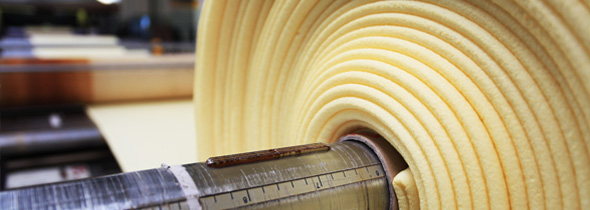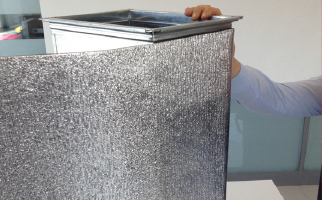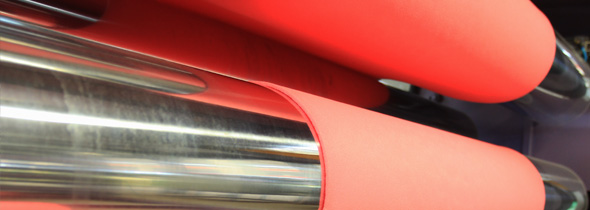Have you ever wondered what makes cross-linked polyethylene foam so special? This remarkable material is a true game-changer in various industries, thanks to its unique properties. At its core, cross-linked polyethylene foam (often abbreviated as XLPE) is created through a fascinating chemical process that enhances its structure and performance. Imagine a sponge that not only absorbs water but also retains its shape and durability over time! That’s the magic of cross-linking.
During the production of XLPE foam, polyethylene molecules are chemically bonded together, forming a network that significantly improves the foam’s strength and resilience. This process not only increases the foam’s durability but also enhances its resistance to moisture, chemicals, and temperature fluctuations. As a result, cross-linked polyethylene foam is not just any ordinary foam; it’s a versatile material that excels in various applications.
Let’s take a small break from our article. Do not forget to review Durfoam‘s service pages below:
From packaging to construction, the uses of XLPE foam are vast and varied. It provides excellent insulation, cushioning, and soundproofing, making it a preferred choice for many industries. Whether you’re protecting delicate electronics during shipping or insulating a building, cross-linked polyethylene foam stands out as a reliable and effective solution.
Understanding Cross-Linking
Cross-linking is like the secret sauce that transforms ordinary polyethylene foam into a robust and versatile material. When we talk about cross-linking, we’re referring to a chemical process that connects individual polymer chains, creating a three-dimensional network. This intricate bond enhances the foam’s properties, making it not only stronger but also more resilient to wear and tear.

Imagine a spider’s web: each strand is connected to others, forming a structure that can withstand considerable pressure. Similarly, the cross-linked structure of polyethylene foam allows it to endure stress and maintain its shape over time. This durability is crucial for applications where foam is subjected to heavy loads or frequent use.
Moreover, cross-linking significantly impacts the foam’s moisture resistance and thermal stability. By reducing the foam’s permeability to liquids, it becomes an ideal choice for insulation in construction and packaging. The result? A material that not only protects but also performs exceptionally well under various environmental conditions.
In summary, understanding cross-linking is essential for appreciating why cross-linked polyethylene foam is a preferred choice across multiple industries. Its unique properties stem from this transformative process, making it a vital player in the world of materials.
Applications of Cross-Linked Polyethylene Foam
Cross-linked polyethylene foam, often referred to as PE foam, is a marvel of modern material science, finding its way into a myriad of applications that are as diverse as they are intriguing. Imagine a world where your delicate electronics are cushioned in protective layers, or where your home is insulated against the chill of winter—this is the magic of cross-linked polyethylene foam at work!
This foam is particularly popular in the packaging industry, where it serves as a reliable barrier against shock and vibration. Whether it’s safeguarding fragile glassware during shipping or ensuring that high-tech devices arrive intact, cross-linked polyethylene foam has proven to be indispensable. But it doesn’t stop there; its insulating properties make it a go-to choice in the construction sector, where it helps maintain energy efficiency in buildings.

Additionally, this versatile material excels in soundproofing applications, effectively dampening noise in commercial and residential spaces. Its ability to absorb sound waves makes it a favorite among architects and builders who prioritize comfort and tranquility in their designs. To summarize, the applications of cross-linked polyethylene foam can be categorized as follows:
- Packaging: Protects fragile items during transport.
- Insulation: Enhances energy efficiency in buildings.
- Cushioning: Provides shock absorption for sensitive equipment.
- Soundproofing: Reduces noise levels in various environments.
In essence, the applications of cross-linked polyethylene foam are not just practical; they are vital in creating a safer, quieter, and more efficient world. Its unique properties ensure that it remains a preferred choice across various industries, continually evolving to meet the demands of modern life.
Advantages Over Other Foam Types
When it comes to foam materials, cross-linked polyethylene foam stands out like a diamond in a sea of pebbles. Why, you ask? Well, its unique properties give it a leg up compared to other foam types. For starters, this foam exhibits exceptional moisture resistance, making it a top choice for applications in humid environments. Imagine trying to protect your valuable items from water damage; this foam acts like a shield, ensuring that moisture stays at bay.
Moreover, the resilience of cross-linked polyethylene foam is nothing short of impressive. It can withstand compression and deformation, which means it bounces back to its original shape after being squished. This is a significant advantage over traditional foams that often lose their structure over time. Picture a sponge that retains its form no matter how much you squeeze it—that’s the magic of cross-linking!
Additionally, the foam’s soundproofing capabilities are noteworthy. Whether you’re looking to create a quiet workspace or reduce noise in a construction project, cross-linked polyethylene foam can absorb sound effectively. This makes it an ideal choice for insulation and cushioning applications.
To sum it up, here are some key advantages:
- Moisture Resistance: Protects against water damage.
- Resilience: Maintains shape under pressure.
- Soundproofing: Reduces noise effectively.
In a nutshell, cross-linked polyethylene foam is not just another foam; it’s a reliable partner in various industries, proving time and again why it’s often the preferred choice for those who demand quality and durability.





